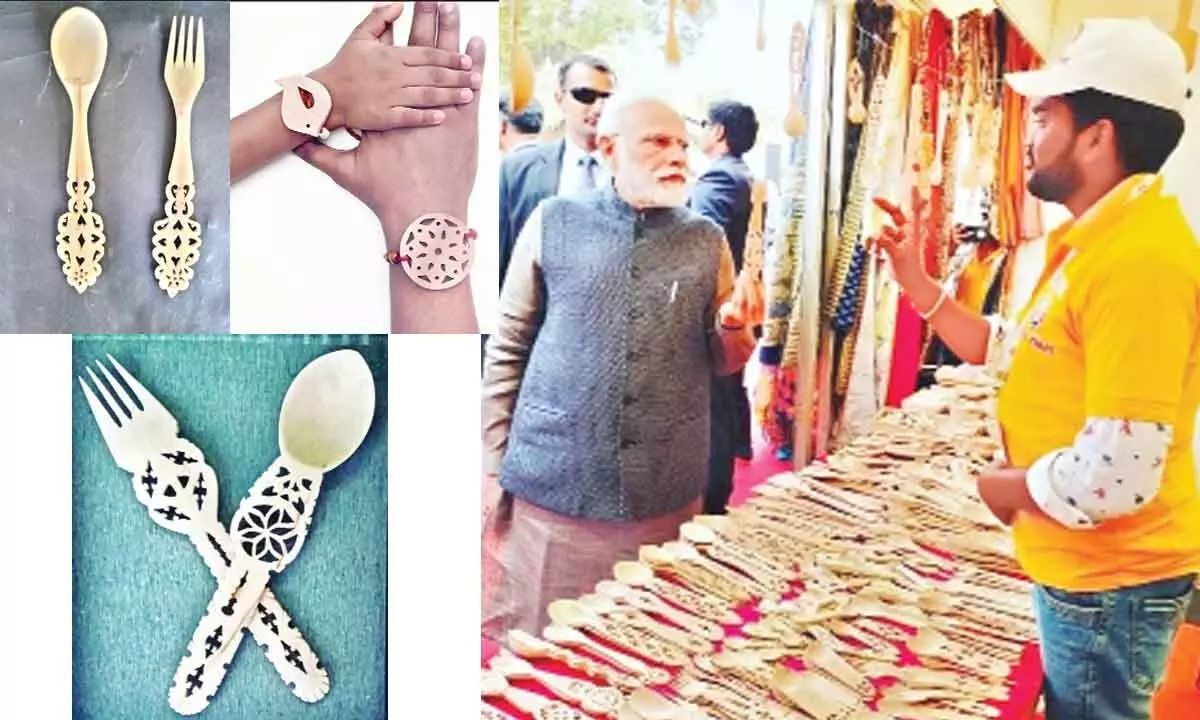Hungry for revival – The story of Udayagiri Wooden Cutlery

Decorative in its appeal and utilitarian by nature, Udayagiri’s wooden cutlery is a rare art form that adds a touch of class wherever it goes.
Decorative in its appeal and utilitarian by nature, Udayagiri's wooden cutlery is a rare art form that adds a touch of class wherever it goes. Developed by the artisans of Udayagiri, this art form has also had the support and patronage of the regal families in that region.
Udayagiri's wooden cutlery takes its name from the city that it originates from – Udayagiri. A tiny city in the Nellore district of Andhra Pradesh, it is said that Udayagiri's history dates back to the 14th century – the time when the Gajapatis of Odisha were ruling that region. Following the Gajapatis, Udayagiri was ruled by Krishnadevaraya of the Vijayanagar kingdom and then the Nawabs of Arcot. And it was during the rule of the nawabs that the popularity of Udayagiri's wooden cutlery grew leaps and bounds.
A mealtime fancy, Udayagiri's wooden cutlery comprises bowls, spoons, knives, forks, et al – that are carved with beautifully done Persian motifs. A 150-year-old art form, Udayagiri wooden cutlery has been a legacy that has been carefully passed on among the artisans, specialising in this craft, across many generations. Originally dominated by the males, this craft is seeing a new light of day – with the women taking the lead both in the design and development space of this craft. Specially sourced from the hills of Durgampalli, Udayagiri wood cutlery is made with wood of extremely fine quality. Since the carving is quite an intricate process, a softer variety of wood such as devadari, kaldi chakka, nardi, bikki chakka and palabarki is used – of which bikki and nardi varieties are the most commonly used, especially for the smaller cutlery pieces. As for the larger cutlery pieces such as bowls, they are made of harder wood like kaldi chakka or devadari. Following the selection of the wood, the cutlery is made with a great amount of precision using a 5 step process: procurement – processing – shaping – carving – finishing.
Procured from the forests of Durgampalli, based on the requirement, the artisans meticulously select wooden blocks and carry them home for processing. These chunks of wood are then stored in a dry area for around ten days only to be soaked in water and redried again, followed by cutting into smaller sizeable blocks. Before moving to the process of shaping, a jute string is wound onto these blocks with a heavy stone placed on top of it – this is done to facilitate further drying process in order to prime the blocks for carving. Once the thread is unwound, the desired shape is marked on the cutlery and the shape is carefully carved out with a chisel. The whole magic of Udayagiri wooden cutlery lies in this step of carving – because more than ninety per cent of the whole process is hand-work and only about ten per cent of the process warrants the help of a machine. Finally, the last leg entails the finishing bit in which the artisans skilfully file the chiselled artwork into the finest form – either using their hands or with the help of a paper finishing machine.
An artwork as beautiful, intricate and nuanced as this, with a tradition of 150 years preceding it, is today battling with the effects of urbanisation and the plasticising of practically everything. Thankfully Udayagiri wooden cutlery received a timely recognition of a GI tag in 2015, during which time it almost fell prey to extinction. Today, the artisans are hoping and wishing for the next generations to continue the legacy of this art form, however, the youngsters are showing little interest. It is affordable yet regal-looking, simple yet laborious in its making. Udayagiri wooden cutlery will await your hello and hopes to feature in your mealtime happiness at home – for as a connoisseur of art, don't you feel responsible to save its future? Gift yourself some Udayagiri wooden cutlery, or surprise your near and dear ones; for, this will definitely have you bowl-ed over!


















